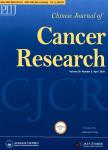Biology and treatment of cervical adenocarcinoma
Biology and treatment of cervical adenocarcinoma作者机构:Department of Obstetrics and GynecologySchool of MedicineIwate Medical University
出 版 物:《Chinese Journal of Cancer Research》 (中国癌症研究(英文版))
年 卷 期:2016年第28卷第2期
页 面:254-262页
核心收录:
学科分类:1002[医学-临床医学] 100214[医学-肿瘤学] 10[医学]
主 题:Cervical cancer adenocarcinoma (ADC) atypical glandular cell (AGC) gastric type adenocarcinoma (GAS)
摘 要:Uterine cervical adenocarcinoma (ADC) has been increasing in its prevalence world widely despite the decrease of squamous cell carcinoma (SCC). It comprises nearly 20-25% of the all cervical malignancy in developed countries. The worse biological behavior had been reported in patients with intermediateand high risk factors after surgery, and in advanced stage over III, radiotherapy (RT) alone and concurrent chemo-radiotherapy (CCRT) with cisplatin was not always effective. As for chemotherapy (CT), the iaduction CT has not established, as well. Further molecular targeted therapy (MTT) has been studied. The targets of oncogenic driver mutations were vascular endothelial growth factor (VEGF) in SCC, or tyrosine kinase (TK) of endothelial growth factor receptor 2 (EGFR2, Her2/neu)-Ras-MAPK-ERK pathway. Bevacizumab (Bey, anti-VEGF monoclonal antibody) is considered as one of key agent with paclitaxel and carboplatin in SCC, but not for ADC. This article focuses on up-to-date knowledge of biology and possible specific therapeutic directions to explore in the management of cervical ADC.



